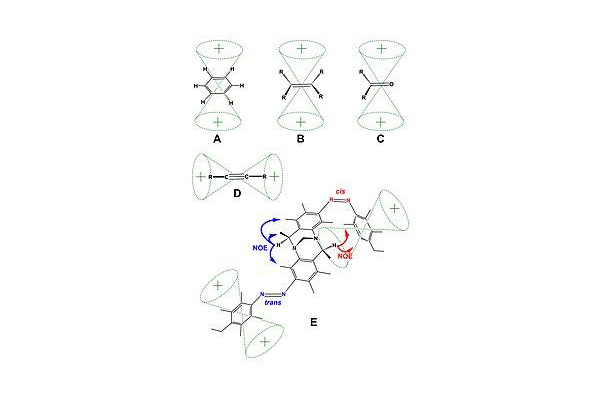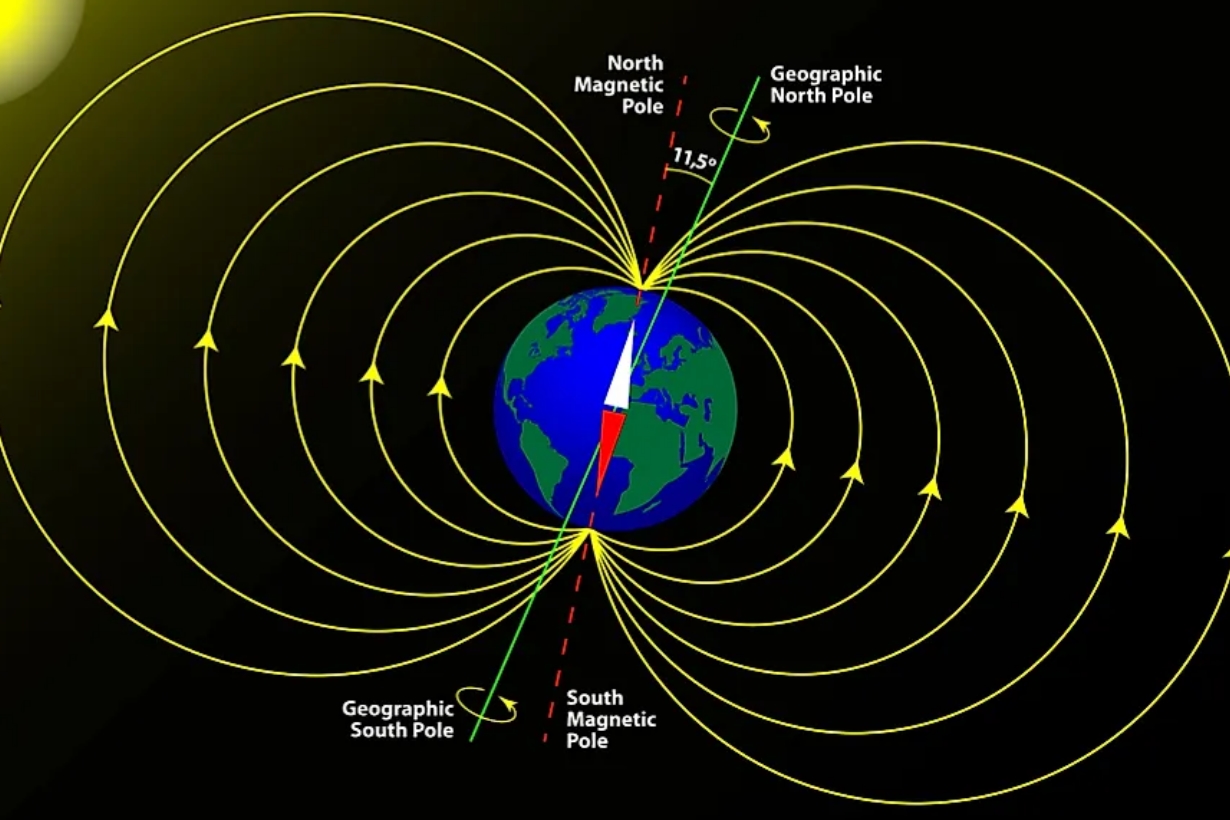What is Magnetic Anisotropy?
What is Magnetic Anisotropy?
Magnetic anisotropy refers to how direction affects the magnetic property of a material. It describes how a material might be easier or more difficult to magnetize depending on the direction of the material. There are two preferred directions to magnetize a material that exhibits magnetic anisotropy. The angle between both directions is 180°. The line that lies parallel to both directions is referred to as the easy axis. Hence, magnetization can as easily occur in one direction as in the other.

Magnetic Anisotropy. Image Source: Wikipedia
Causes of Magnetic Anisotropy
There are various causes of magnetic anisotropy. All the causes of magnetic anisotropy are extrinsic except for one.
--Magnetocrystalline Anisotropy
This is the most common cause of magnetic anisotropy. It is also the only intrinsic cause of magnetic anisotropy. This occurs when the crystal lattice of an object influences its preferred direction for magnetization. More energy is required to magnetize the material in a direction that is not the preferred direction. This energy is called crystalline anisotropy energy.
--Shape Anisotropy
This is usually seen in materials that are not spherical. In non-spherical materials, there will be at least one easy axis because the demagnetizing field will not be the same in all directions. It will be more in some directions and less in others.
--Magnetoelastic Anisotropy
The tension or force on a material can change its magnetic properties. This can lead to magnetoelastic anisotropy.
--Exchange Anisotropy
This is another cause of magnetic anisotropy. In 1956 Bean and Meiklejohn discovered this type of magnetic anisotropy. When an antiferromagnetic material is coupled to a ferromagnetic material, the antiferromagnetic material is likely to cause a change in the magnetization of the ferromagnetic material.
Anisotropic Magnets
We have learned about magnetic anisotropy. However, we are yet to unravel the definition of an anisotropic magnet. Anisotropic magnets are magnets that have their magnetic properties dependent on their magnetization direction. This means that they have different levels of magnetism in varying magnetization directions.
When manufactured, they are aligned in their future magnetization direction. These magnets have a preferred magnetization direction. Outside this direction, they cannot be magnetized. An advantage of this type of magnet is that it has stronger magnetic properties than isotropic magnets.
Further Reading: Magnetic Materials: Isotropic VS. Anisotropic
Anisotropy and Anisotropic Materials
--Anisotropy in Hard Magnets
More often than not, you would find that hard magnets are anisotropic. This does not mean that all anisotropic magnets are hard magnets nor does it mean that all hard magnets are anisotropic. For example, bonded neodymium magnets are hard magnets but they are not anisotropic because they lack a preferred magnetization direction.
--Anisotropy in Soft Magnets
Anisotropy can also occur in soft magnets. However, it is less common in soft magnets than in hard magnets. It occurs in grain-oriented magnets. Grain-oriented magnets have their grains directed in a preferred magnetization direction.
--Sintered Neodymium Magnets: A Popular Anisotropic Magnet
Sintered neodymium magnets are produced in such a way that the grains are oriented in a preferred direction for magnetization. Neodymium magnets are made from neodymium, iron, and boron.
- To produce sintered neodymium magnets, the alloy is first magnetized and poured into a cast where it is cooled.
- In the next step, the alloy is ground into fine powder. The powder is placed in a magnetic field and its shape is formed under high pressure. This step of sintered neodymium manufacture is very important because it determines the preferred magnetization direction of the magnet.
- Subsequently, when the finished magnets are placed in a magnetic coil, the magnetic field of the coil will be in the same direction as the crystal lattice of the sintered neodymium magnets. It is this magnetic field from the coil that will magnetize the sintered neodymium magnets permanently.
Applications of Anisotropic Magnets
Anisotropic magnets are applied in various industries around the world. They are usually stronger than isotropic magnets and this makes them well-suited for specific industries.
--Sensors
Anisotropic magnets like samarium cobalt magnets are used in sensors. These sensors function when they change a magnetic field into electrical signals. They are usually used in aerospace and automobiles.
--Generators
Anisotropic magnets are used in generators. The magnet provides the magnetic field for the generator. These generators are sometimes used in wind turbines.
--Refrigerators
Anisotropic magnets such as samarium cobalt magnets are fast becoming popular in the refrigeration industry. Massachusetts Institute of Technology is currently carrying out studies on how magnets can be used as refrigerants.
--Nuclear Magnetic Resonance Spectrometer
They are also used in NMR spectrometers. In these devices, magnets are used to detect the spin of protons and neutrons. NMR spectrometers are used to examine both the physical and chemical properties of organic compounds.
--Medicine
These magnets are used in medical equipment that requires high temperatures for sterilization. This is because they are stable under high temperatures. They are also used as materials for medical implants.
Conclusion
Knowledge of magnetic anisotropy gives insight into why magnets act the way they do. The importance of majestic anisotropy is seen in manufacturing industries and even medical practice. You can decide if a magnet will be suitable for a particular project by using magnetic isotropy as a factor. If you want to learn more about magnetic materials, we would like to advise you to visit Stanford Magnets for more information.















